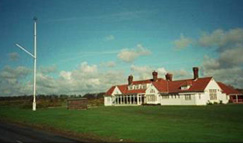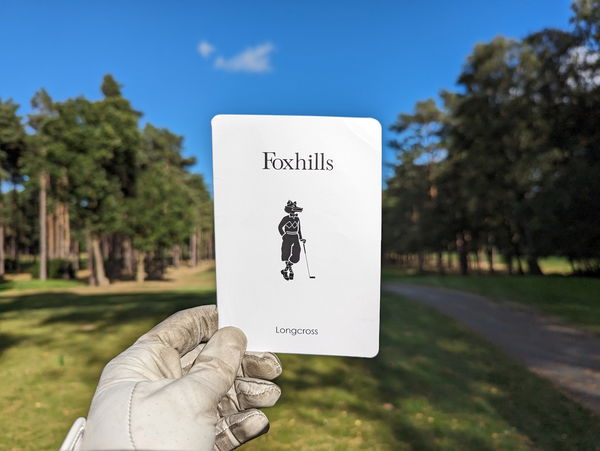So you think you know about greenkeeping?
How do you get one of the best jobs in golf? We get the tips from Master Greenkeeper Mark Broughton

Who decides when a course has to be closed and when temporary greens should be used?
What kind of conditions determine when this should happen?
Many courses close when there is frost but the policy varies from course to course as the seriousness of the damage caused by playing in these conditions depends on many factors including drainage and the grass species present. Commercial considerations also play a part. Bear in mind that greenkeepers are looking after the long-term interests of the club and that the difficult decision to close the course is not made lightly.
When the turf is frozen the cells of the grass can be crushed and bruised (often seen as black footprints or trolley tracks) and although the turf will recover, the cumulative effects of several frosts can lead to deteriorating turf quality and a late start to growth in the spring. What does hollow tining and slitting green surfaces achieve?
The amount of air in the soil is reduced by compaction caused by traffic (golfers and maintenance equipment) and aeration work aims to redress the balance. Aeration improves drainage, root depth, and drought resistance. It also reduces the need for artificial fertilisers and irrigation and ultimately leads to firmer faster greens with less need to resort to course closure and temporary greens.
How often should greens be cut in winter and summer?
Some links courses have over 150 bunkers and these bunkers are often an essential part of the character of the course. On many courses a strong case can be made for a review of bunkering in the light of the modern equipment available to golfers but this review should be carried out with the help of a reputable golf course architect. The amount of consideration given to maintenance costs in any review would depend on the policy and aims of the club.
|
It’s inevitable that we’ll hear moans, especially at this time of the year – a crucial growing period – from golfers who don’t understand the art of course maintenance.
At most clubs everyone’s ‘an expert’ in how to produce smooth fairways, greens like Augusta and pristine bunkers – just because they mow their own lawn once a fortnight.
Slightly tired of hearing the groaners, I decided to ask a real expert a few key questions on what goes on behind the scenes. What equipment tools and machinery are needed to do the job and what tips does one of the best greenkeepers in the UK have for growing grass from seed and keeping on top of lawn care.
A greenkeeper can earn a great salary. An apprenticeship course will train you on the skills, tools and tips you need for the job and as of 2012, will pay around £8,500 a year. A qualified Greenkeeper will earn in the region of £25,000 a year while a course manager will earn from £35,000 upwards, with the top courses paying a salary of over £45,000 per annum. Click here to read about recommended Greenkeeper salaries.
Many organisations exist to support and nurture greenkeeping in the UK and Ireland; The British and International Golf Greenkeepers' Association and The Greenkeepers Training Committee are both based in the UK and there is also the Federation of European Golf Greenkeepers Association who all aim to promote sustainable greenkeeping.
Mark Broughton, course manager at Aldeburgh in Suffolk – one of only a handful of master greenkeepers – has 28 years of experience both at his current course and at Royal Lytham and St Annes.
A greenkeeper’s job seems an unenviable task. Can you describe a typical day in both the winter and summer months?
There are times when a greenkeeper’s job is unenviable, but that is probably true of most jobs. Most of the time greenkeeping is a very enjoyable and challenging job in a pleasant environment.
One of the best things about the work is that it is very varied both seasonally and throughout the average day or week. For this reason it’s difficult to describe a typical day but some tasks such as bunker raking and changing the position of the hole are carried out regularly throughout the year. Reconstruction and development work is usually concentrated in the winter months with mowing dominating the timetable during summer.
Who decides when a course has to be closed and when temporary greens should be used?
Usually the day to day decisions are made by the course manager but the policy he or she operates under will have been set by the committee or owner with input from the course manager and other greenkeepers.
What kind of conditions determine when this should happen?
Courses are usually closed for snow, flooding or waterlogged conditions and when hard frost is thawing from the surface leaving a soft layer over still frozen soil.
Many courses close when there is frost but the policy varies from course to course as the seriousness of the damage caused by playing in these conditions depends on many factors including drainage and the grass species present. Commercial considerations also play a part.
Bear in mind that greenkeepers are looking after the long-term interests of the club and that the difficult decision to close the course is not made lightly.
Why should main greens not be used after a frost? What kind of damage can be done?
The damage caused by frost varies considerably and is influenced by a range of factors. These include the weather conditions preceding the frost, soil type and drainage, the types of grass, amount of play and anything that influences the amount of stress the turf is under.
The severity of the frost and how prolonged it is also have an important effect. Play on turf that is thawing from the surface can cause significant damage. The soft layer over a frozen base makes the grass vulnerable to damage that can include shearing of the roots from the plant stem.
When the turf is frozen the cells of the grass can be crushed and bruised (often seen as black footprints or trolley tracks) and although the turf will recover, the cumulative effects of several frosts can lead to deteriorating turf quality and a late start to growth in the spring.
What does hollow tining and slitting green surfaces achieve?
Greenkeepers use the term aeration to describe the various methods of making holes in the soil. The main aim is to achieve the right balance of solids, air and water in the soil.
The amount of air in the soil is reduced by compaction caused by traffic (golfers and maintenance equipment) and aeration work aims to redress the balance. Aeration improves drainage, root depth, and drought resistance. It also reduces the need for artificial fertilisers and irrigation and ultimately leads to firmer faster greens with less need to resort to course closure and temporary greens.
What is the benefit of putting a layer of sand on greens and tees?
Top dressing has many benefits but the principal ones are to produce a level and true turf surface and to help in the control of thatch (a soft fibrous organic layer at the turf surface).
Greens tend to be fertilised with tiny pellets at this time of year. Why? And is it dangerous to golfers?
Many types of dressings – not all of them fertiliser and not all pellets - are applied to greens at this time of year, some to stimulate growth others as pesticides. But it is unlikely that any would be harmful.
How often should greens be cut in winter and summer?
The greens on most courses are cut six or seven times a week in the summer and about once per week in the winter. The actual frequency depends on many factors including growth rates, weather conditions, budget, staff levels, type of course, machinery available, and other operations such as pesticide application. Some pesticides are only effective if turf is not mown for a period before and after application.
What can golfers do to keep the course they play in the best condition?
The biggest difference the golfer can make is to observe golf etiquette - rake bunkers carefully, repair pitch marks and replace divots. Also be aware of the effects of concentrated traffic on the course, think about varying your routes from green to tee slightly and carry your bag if you can, particularly in the winter. (And avoid wheeling your trolley too close to the green. Remember to give the area around the green a wide berth and park it towards the next tee as this also helps to speed up play. While a greenkeeper is paid to maintain the course, the less time they spend on trivial issues the more time they can spend improving the course. Ed)
Bunkers are high maintenance and expensive hazards on a course. Are there too many and wouldn’t the greenkeeper’s job be made easier if we returned to using more grass hollows?
Bunkers are labour intensive to maintain to modern standards, but the number that is appropriate for the course depends on the style and design of the course and the budget available for maintenance.
Some links courses have over 150 bunkers and these bunkers are often an essential part of the character of the course. On many courses a strong case can be made for a review of bunkering in the light of the modern equipment available to golfers but this review should be carried out with the help of a reputable golf course architect.
The amount of consideration given to maintenance costs in any review would depend on the policy and aims of the club.
Is there a proper way to rake sand in a bunker?
Yes, but for the golfer the priority when raking the bunker should be to leave the bunker as they would hope to find it. Using both hands on the rake helps to get a good result and pushing the sand up any slope helps to prevent the sand migrating to the lowest point in the bunker.
Coming soon: Mark will reveal how you can train to get a job as a greenkeeper and how greenkeeping has changed in respect of materials and modern technology.
If you have any questions about Greenkeeping, post them on the forum thread below and we’ll get Mark to respond.







![Tiger Woods [Sun Day Red]](https://cdn.golfmagic.com/2025-05/tiger-woods-sun-day-red.jpg?width=400)




